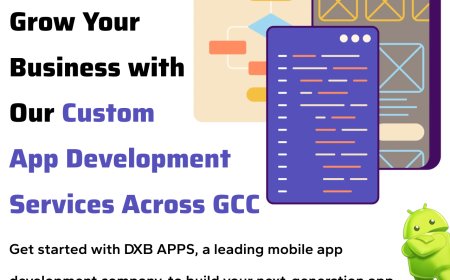How Interactive Math Resources Are Engaging Australian Students
Interactive math resources are transforming how Australian students learn. Discover why these tools are improving engagement, results, and confidence in 2025.

Mathematics has traditionally been seen by many students as a challenging or even intimidating subject. But that perception is changing rapidly in classrooms and homes across Australia. With the rise of interactive math resources, students are not only understanding math more clearlytheyre also starting to enjoy it.
In a world where digital tools, gamified platforms, and hands-on learning are becoming the norm, Australian schools and parents are adopting innovative ways to make math engaging, relevant, and fun. The results? Improved test scores, better attitudes toward learning, and stronger confidence in numeracy skills.
Lets explore how interactive math resources are driving a wave of engagement across the countryand what this means for the future of math education.
1. Gamification Is Changing the Math Game
One of the most effective ways to make math appealing is by turning it into a game. Gamification uses reward systems, points, levels, and challenges to keep students motivated while they learn.
Instead of drilling through repetitive worksheets, students solve problems to earn stars, unlock levels, or build digital worlds. These gaming elements tap into students natural desire for achievement and progress, turning learning into an enjoyable experience.
Popular features of gamified math tools include:
-
Instant feedback and rewards
-
Time challenges and math battles
-
Progress tracking with badges or achievements
-
Leaderboards for friendly competition
Why does this work? Because students dont feel like theyre doing "work." Theyre immersed in the challenge, the strategy, and the satisfaction of winningall while learning vital math concepts.
2. Visual & Interactive Content Enhances Understanding
Abstract math concepts like fractions, geometry, and algebra can be difficult to grasp through text alone. Interactive math resources use visual aids, animations, and manipulatives to make these topics tangible and easier to understand.
Instead of just reading about angles or graphing functions, students can:
-
Rotate 3D shapes
-
Slide fractions to create equivalent values
-
Drag and drop variables into equations
-
Experiment with virtual number lines or grids
This hands-on, visual approach helps different types of learnersespecially visual and kinesthetic learnersconnect with content in meaningful ways.
3. Adaptive Learning Tools Meet Students at Their Level
Not all students learn at the same pace, and traditional classrooms often struggle to cater to individual needs. Interactive math platforms solve this problem by using adaptive algorithms that tailor content in real-time.
If a student struggles with multiplication, the platform will slow down, offer extra support, or break the topic into simpler parts. If they master a topic quickly, theyre automatically moved to more challenging problems to keep them engaged.
This personalised experience leads to:
-
Reduced frustration
-
Greater confidence
-
A sense of ownership in learning
For example Mastering Math Online uses these adaptive techniques to offer custom practice sets, instant feedback, and step-by-step supportall aligned with the Australian curriculum.
4. Teachers Are Using Data to Support Engagement
Interactive tools dont just benefit studentsthey give teachers powerful data to monitor performance, identify problem areas, and track progress over time.
With real-time dashboards, teachers can:
-
Pinpoint which students need help
-
Adjust lessons based on performance trends
-
Encourage self-paced learning for advanced students
-
Celebrate small wins and milestones
This helps create a more responsive and supportive classroom where no student gets left behind. Teachers can spend more time guiding and less time guessing.
5. Parents Can Get Involved in Meaningful Ways
Another major benefit of interactive math resources is that they bridge the gap between school and home. Many platforms now include parent dashboards or allow parents to assign practice problems and view their child's progress.
This is especially helpful during breaks. For instance, around the Australia school holidays Date, parents can ensure learning doesnt stop by setting small, achievable math challenges using online tools.
Short daily sessions (1020 minutes) can help prevent learning loss and maintain momentumwithout overwhelming the family schedule.
6. Math Becomes Relevant with Real-World Context
One of the biggest challenges in teaching math is making it feel relevant. Students often ask, When will I ever use this? Interactive tools answer that question by showing how math connects to real-life situations.
Through simulations, virtual field trips, and contextual problem-solving, students might:
-
Use percentages to shop on a budget
-
Solve geometry puzzles to design a dream room
-
Analyze sports statistics in fantasy leagues
-
Plan trips using distance, time, and currency conversions
These practical applications demonstrate that math isnt just a classroom subjectits a life skill.
7. Interactive Resources Are Supporting Diverse Learners
Australian classrooms are beautifully diverse. Students may come from different cultural backgrounds, speak English as a second language, or have learning difficulties such as dyslexia or ADHD. Traditional approaches dont always work for every student.
Interactive math tools provide the flexibility to:
-
Choose preferred learning modes (video, audio, text)
-
Adjust font sizes and visual contrast
-
Offer multilingual support
-
Allow students to revisit lessons as often as needed
This inclusivity ensures that every student gets the support they need to succeed, no matter their learning style or background.
8. Engagement Leads to Better Results
Engagement isn't just a buzzwordit's one of the strongest predictors of academic success. When students are actively involved in their learning:
-
They retain information longer
-
They develop a growth mindset
-
They participate more in class
-
They build stronger foundational skills
In recent studies across Australian schools, classrooms that implemented interactive math tools reported improved student outcomes in national assessments and classroom performance. This suggests that the way we teach math is just as important as what we teach.
9. Supporting Learning Beyond the Classroom
The beauty of digital, interactive math tools is that theyre not tied to the school bell. Learning can continue at home, in the car, on holiday, or during weekend downtime. Students can log in anytime and anywhereperfect for the modern family lifestyle.
Interactive resources offer a stress-free way to stay on track without the pressure of formal tutoring.
Final Thoughts: The Future of Math Is Engaging
Interactive math resources are doing more than just boosting gradestheyre transforming how students feel about math. By making learning fun, visual, personalised, and relevant, these tools are unlocking potential in students who once saw math as a struggle.




































